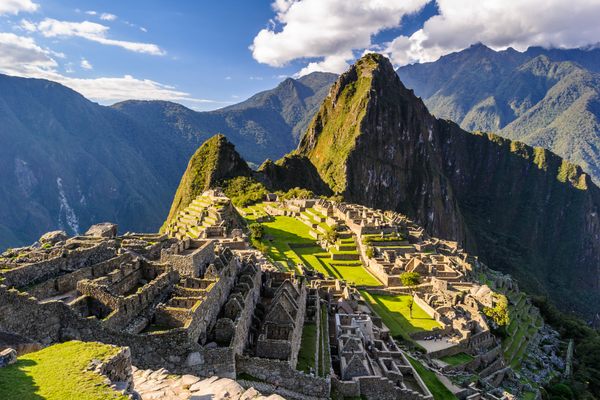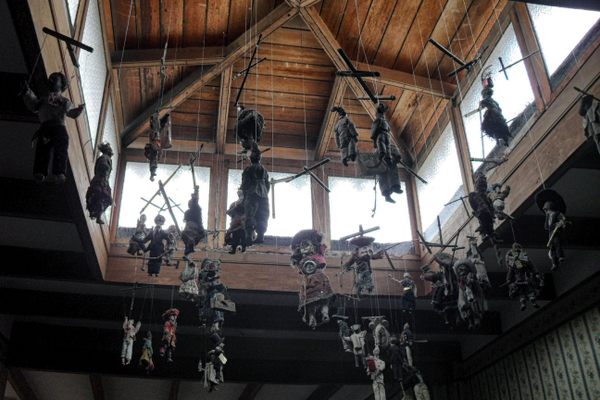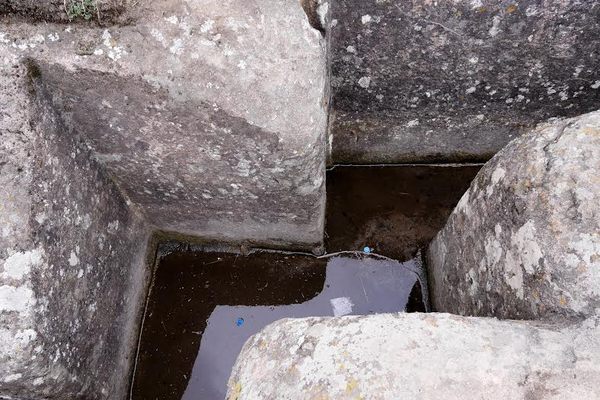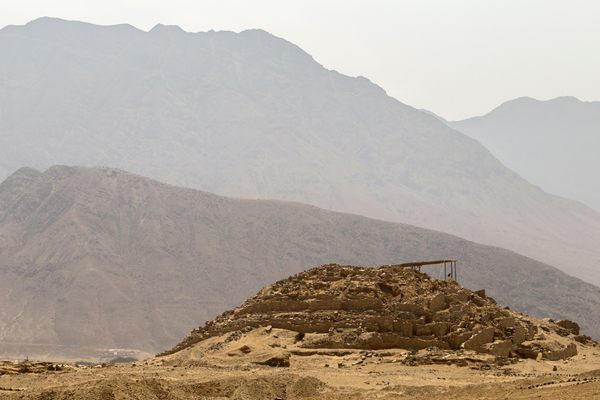AO Edited
Paseo de la Cultura Mochica
This walk to the Pacific Ocean is surrounded by modern statues of Mochica Gods.
The Moche civilization, also known as the Mochica culture, was an ancient civilization that thrived along the northern coast of present-day Peru from around the years 100 to 800. Renowned for their impressive artistic achievements, advanced agricultural practices, erotic pottery, and complex social organization, the Moche people left a lasting impact on the region’s history.
Religion played a central role in Mochica society. They worshipped a pantheon of deities, with the “Decapitator” being one of the most prominent figures that was often depicted in their art. Ritual human sacrifices were performed to appease these gods and ensure agricultural prosperity and social order.
Moche is also the name of a town located near the city of Trujillo on the northern coast of Peru. While this town is known for its renowned beaches along the Pacific Ocean, a hidden history awaits those who seek it. A pathway adorned with contemporary depictions of Mochica Gods, now winds its way towards these shores.
Embark on a unique journey where each deity comes to life through modern sculptures portraying eerie or awe-inspiring creatures. From the enigmatic half-man and half-crab, to the imposing humanoid evil-looking fish, a total of 10-20 statues bring their stories to life. Each statue is accompanied by informative details about the corresponding deity. (You can find a similar assemblage of statues in the town of Chiclayo, Peru, called the Paseo Yortuque.)
As you traverse this evocative pathway, you’ll encounter illustrated arcs that add an extra layer of aesthetic detail. The route culminates close to the ocean’s edge, offering a seamless segue for visiting the beaches of Acapulco or Playa de las Delicias.
Know Before You Go
The walk starts at 20-30 minutes drive from Trujillo's main square, going southwest toward Moche by the Panamericana. Free parking is available all along the walk. Plaques describing the statues' history are all written in Spanish, so be sure to bring a translator if you need one.


















Follow us on Twitter to get the latest on the world's hidden wonders.
Like us on Facebook to get the latest on the world's hidden wonders.
Follow us on Twitter Like us on Facebook